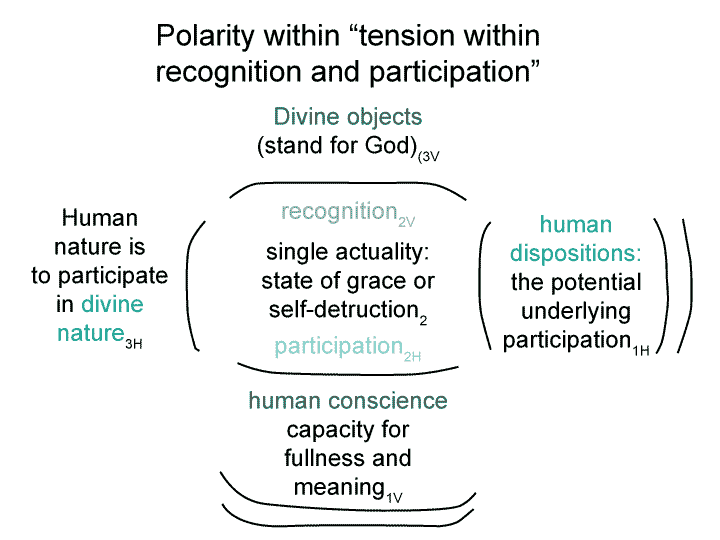[Humans belong to God’s Creation.
Humans recapitulate the Godhead (or objectrelation).
We (humans) recapitulate the theological relation (the actuality of the One True Triune God) in our self-recognition:
‘I recognize myself’ may be depicted as a nested form:
A design or object3a(‘I, the one who recognizes’ and ‘myself, the one who is recognized’2a(the possibility of I recognizing myself1a)).
We recapitulate the anthropological relation (the attraction of God and humans) in our participation in creation in the light of the theological relation.
Our human nature is to participate in the divine nature may be depicted as a nested form:
God’s immanent nature3b( my participation2b( the potential of my own human nature1b)
Unlike the actuality of ‘assume3cC’, these nested forms are not contiguous. They belong to different categories. They interscope without tension under a particular perspective.
Participation situates recognition.]

